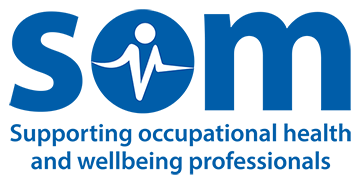
Guest blog by Beverly Knops, Specialist Occupational Therapist
I have been working with people experiencing persistent symptoms following COVID-19 since 2020. At this point I was using the term ‘Post Viral Fatigue Syndrome.’ Following publication of the NICE COVID-19 rapid guidelines in December 2020, I used the terms ‘ongoing symptomatic COVID-19’ for symptoms persisting between 4 and 12 weeks. When these guidelines were updated in November 2021, they referred to the term ‘Long COVID’. This term was ‘patient made’ and has become the most commonly used. For me, this reinforces the fact that the patient voice - i.e. those with lived experience - must be listened to and any treatment, therapy and advice offered must be done as a collaborative process.
When I first meet a client with Long COVID my aim is to listen to their story, to find out what happened during the course of their illness from onset to the present day. How did the initial symptoms present, what is changed, how do the symptoms impact on their life? I also want to know their personal beliefs about Long COVID, what they have read and heard, what their expectations are for treatment and the future, what their concerns are. There is an immense amount of information out there that individuals need to navigate. I try to listen without judgment and through careful, respectful discussion help people to gain some clarity regarding the efficacy of treatments and what they may be able to do right now to influence their symptoms. It is at this point that I bring my clinical experience to the table, often offering a distinct perspective based on my research and work within this clinical area. This is a crucial time to also discuss individual experiences and expectations regarding work. What vocational capacity will they need to achieve before a return to work is realistic? Will the employer support a slow, supported return? Will the individual cope with changes to the way they work?
We can then start to identify a way forward. For most of my clients the first stage is trying to find balance in their day. We look at the basics, including rest, activity, exercise, and nutrition. Many people have lost their daily routines, responding to the fluctuating nature of their symptoms, and doing what they can when they feel they can. In my experience it is difficult to move forward without establishing some routine which will help regulate the body. If someone is trying to sustain work, I may advise on temporarily reducing hours or changing a pattern of working whilst a more stable routine is established, but often this stage does require some time off work.
When a reasonable routine is in place, we can then start to consider how to build capacity, focussing on activities that are transferable to the workplace. What physical, cognitive, and social demands are required? Increments need to be made slowly and continuously reviewed and adjusted, but increasing is possible. It is only with cautious experimentation that we can together work out the optimal way forward. People often experience setbacks, i.e. times when the symptoms increase and function declines. Although these times are difficult, they do offer an opportunity to gain experience more about what influences/triggers symptoms, and this can guide the ongoing process. At the start, people often say they have no control over symptoms, but over time and through careful exploration they become more aware of their personal triggers and can consequently take some control over them. The most common ones my clients identify are overexertion (physically, cognitively, or socially), and stress. We can work with all of these to minimise their impact.
So when is the right time to plan a return to work? Many people still say to me that they have to be 100% well to return, or their employer says, ‘don’t come back until you are fit’. This can take some time to unravel but for the vast majority it is possible to return whilst experiencing symptoms and work itself can be an essential part of therapy. The starting point is probably the most important one: finding the right amount of time and activity that is beneficial to the employee and employer. I often start with two hours of work on four days a week, doing tasks that are not too demanding and have no time pressure. Many of my clients work in high pressure environments with significant cognitive demand. They reflect on their abilities pre-COVID and often describe themselves as thriving under this pressure, being cognitively very capable, being able to synthesise information quickly and make decisions. Adjusting expectations of self and the employer and learning to do things in a moderated way can be particularly challenging.
What I have learned, not only in recent years with Long COVID, but also the 25 years prior to this working with people with post viral syndrome, ME/CFS and Fibromyalgia is:
- Every individual is different and needs a personalised therapy and return to work plan
- Work can be an important part of therapy, but the hours and tasks need to be carefully planned and agreed at each stage
- Setbacks/periods of increased symptoms are part of these conditions and need to be managed as part of a successful plan
- A return to full contracted hours and role is possible but much slower than everybody usually expects or wishes for
- Some people do not return to their previous roles but are able to work part time with reasonable adjustments and still add considerable value
- Working collaboratively will always provide the best outcome
Beverly Knops is a Specialist Occupational Therapist at Vitality360.

